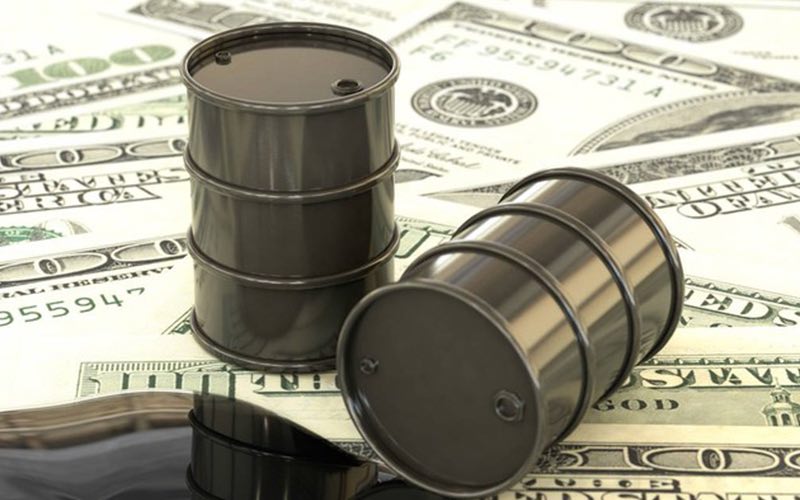Trump threatens to significantly increase tariffs on India, India accuses the US and Europe of double standards
2025-08-05 01:45:58

India's Ministry of External Affairs quickly responded, criticizing the US and EU for their "manifestly unfair" accusations against India and pointing out that the US and EU's own trade with Russia far exceeds that with India, highlighting their "double standards." This dispute not only exacerbated trade tensions between the US and India but also exposed the complex game between geopolitical and economic interests.
Trump's tariff threats and motivations
"Not only is India buying massive amounts of Russian oil, but they are then selling much of that purchase on the open market for huge profits. They don't care how many people are being killed in Ukraine by the Russian war machine," Trump said in a TruthSocial post. He therefore announced a significant increase in tariffs on India, but did not specify the new tax rate or when it would be implemented.
Previously, Trump announced on July 30 that he would impose a 25% tariff on Indian goods starting August 1, in addition to "punitive" tariffs imposed due to India's energy and military trade with Russia. These tariffs are higher than the average 2.4% tariff rate imposed by the United States on Indian goods in the past few years, but lower than the 26% tariff announced on "Liberation Day" in April.
Trump's tariff policy is the centerpiece of his second-term trade strategy, aimed at reducing the U.S. trade deficit with other countries through "reciprocal tariffs" and putting pressure on countries that maintain economic ties with Russia. According to U.S. Trade Representative Jamieson Greer, these tariffs are based on trade negotiations and the level of the trade deficit, and are unlikely to be reduced through negotiations in the short term.
In 2024, the US trade deficit with India was estimated at $45.8 billion. Trump believes India's high tariffs (averaging about 17%) and non-tariff barriers (such as the digital services tax) are unfair to the US. Furthermore, he views India's energy and military trade with Russia as a challenge to Western policies to isolate Russia, and has threatened to impose secondary sanctions of up to 100% on countries purchasing Russian oil.
India's tough response
On the evening of August 4, Indian Foreign Ministry spokesman Randhir Jaiswal issued a statement refuting the accusations against India by the US and Europe, calling them "manifestly unfair." The statement noted that India's shift to purchasing Russian oil was a "passive choice" because traditional oil supplies shifted to Europe following the outbreak of the Russia-Ukraine conflict. The US, at the time, had explicitly supported India's move in an effort to stabilize the global energy market.
Jaiswal emphasized that India's import of Russian oil is necessary to ensure affordable energy for its citizens amidst global market volatility. The statement further criticized the "double standards" of the US and Europe. Data shows that in 2024, EU-Russia trade in goods reached €67.5 billion, and trade in services reached €17.2 billion, far exceeding India's total trade with Russia during the same period. EU imports of liquefied natural gas from Russia reached a record high of 16.5 million tons in 2024, encompassing fertilizers, minerals, chemicals, steel, and transportation equipment. The US, on the other hand, continues to import chemical products from Russia, including uranium hexafluoride for the nuclear industry, palladium for the electric vehicle industry, and fertilizers.
Jaiswal noted that trade with these countries is largely based on non-rigid demand, in stark contrast to India's energy import needs. Indian Commerce Minister Piyush Goyal told parliament that the government will protect the interests of Indian farmers, workers, and small and medium-sized enterprises through diplomatic negotiations, taking a firm stance and refusing to compromise, particularly in areas such as agriculture, dairy products, and genetically modified crops. Two Indian government sources told Reuters that despite Trump's threats, India will continue to purchase oil from Russia to ensure energy security.
Economic impact and market reaction
India's exports to the US are estimated at $87 billion (2024 figures), accounting for 2-3% of its GDP. These exports primarily include textiles, jewelry, auto parts, and seafood. Analysts estimate that a 25% tariff could reduce India's GDP growth by 0.2 to 0.4 percentage points in the 2025-26 fiscal year. The impact could be even greater if "punitive" tariffs were further increased, particularly if the smartphone and pharmaceutical industries (approximately $25 billion in exports) were included in the tariffs.
Bloomberg reported that Indian stocks fluctuated following Trump's tariff announcement, with the Sensex index falling approximately 2% in early August, reflecting market concerns about an escalating trade war. However, India's economy is less dependent on exports (compared to other Asian countries), and its domestic demand-driven model makes it more resilient to tariff shocks. India is also actively exploring other markets, such as the Middle East and Southeast Asia, to diversify its risks. Meanwhile, the Indian government is promoting a "Swadeshi" (local manufacturing) policy to encourage self-sufficiency in response to global trade uncertainties. For the United States, high tariffs could push up consumer prices, particularly in textiles, jewelry, and electronics. The Wall Street Journal noted that Trump's tariff policy could trigger retaliatory measures from other countries, further disrupting global supply chains. Asian and European stock markets generally fell in early August following the tariff announcement, highlighting global market concerns about an escalating trade war.
Geopolitical and strategic considerations
Trump's tariff policy is not only about economics but also geopolitical considerations. India is a key strategic partner of the United States in countering China, particularly in the Indo-Pacific region. However, Trump's treatment of India on an equal footing with countries like Pakistan and his imposition of penalties for its trade relationship with Russia could weaken the US-India strategic relationship.
The Financial Times commented that Trump's tariff policy lacks geopolitical strategic considerations and may inadvertently push India closer to China, especially within the BRICS framework. India, for its part, prefers dialogue rather than retaliatory tariffs to avoid escalating the trade war. The Indian think tank Observer Research Foundation (ORF) believes that Trump's threats are more of a negotiating tactic aimed at forcing India to make concessions on agricultural and dairy market openings. However, if tariffs continue to escalate, India may reassess its diplomatic and economic relations with the United States.
in conclusion
Trump's threat to significantly increase tariffs on India is part of his global trade war, aimed at reducing the trade deficit and penalizing countries that maintain economic ties with Russia. India has responded strongly, criticizing the US and Europe for double standards and emphasizing the need to import Russian oil. The trade dispute between the US and India is likely to escalate further, posing a short-term challenge to Indian exports and economic growth. However, India's domestic demand-driven economic model and diversified market strategy provide a buffer. Trump's policies will not only affect bilateral trade but also have far-reaching implications for the US-India strategic partnership and the stability of the global supply chain. Whether the US and India can ease tensions through negotiations remains to be seen.
- Risk Warning and Disclaimer
- The market involves risk, and trading may not be suitable for all investors. This article is for reference only and does not constitute personal investment advice, nor does it take into account certain users’ specific investment objectives, financial situation, or other needs. Any investment decisions made based on this information are at your own risk.





















